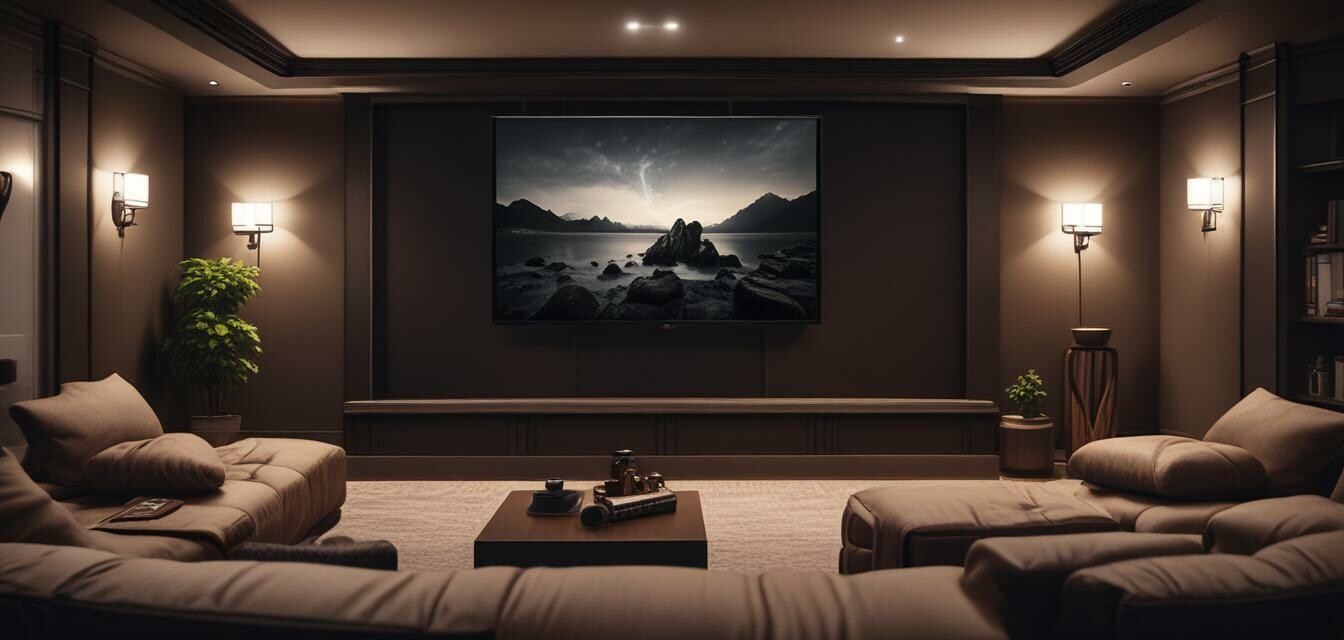
Exploring the Rise of DIY Home Theaters
Key Takeaways
- The trend of DIY home theaters is on the rise, driven by affordability and customization.
- Effective budgeting can help create a stunning home theater experience without breaking the bank.
- Key components, including screens, projectors, and sound systems, play a significant role in enhancing user experience.
- Wireless technology has made it easier than ever to set up a personalized home theater system.
- Understanding acoustic treatments can elevate sound quality in your DIY setup.
The growing trend of DIY home theaters has become a fascinating phenomenon among audiophiles and movie enthusiasts alike. As technologies improve and become more accessible, building a home theater from scratch has transformed from a luxury to a viable option for many. This article explores the ins and outs of creating your own DIY home theater on a budget while providing tips and insights that reflect the latest trends in the industry.
Why DIY Home Theaters Are Gaining Popularity
The popularity of DIY home theaters can be attributed to several key factors:
- Affordability: With low-cost equipment available, individuals can create impressive setups without the hefty price tag of commercial systems.
- Customization: A DIY approach allows homeowners to tailor their setups to specific tastes and preferences, from seating arrangements to audio components.
- Technological advancements: Innovations like streaming devices and smart home solutions make it easier to include modern features in your setup.
- Community support: The rise of online forums and resources has fostered a community where enthusiasts share tips, recommendations, and support.
Essential Components of a DIY Home Theater
To create an unforgettable home theater experience, it's essential to understand the key components involved. Below is a table that outlines crucial elements and their approximate costs.
| Component | Description | Estimated Cost |
|---|---|---|
| Projector | High-definition projectors are essential for displaying quality images on large screens. | $500 - $2,500 |
| Screen | A good screen will enhance the viewing experience, with options ranging from inflatable to fixed screens. | $100 - $1,500 |
| Audio system | Investing in a surround sound system can elevate audio quality significantly. | $300 - $3,000 |
| Seating | Comfortable seating is vital for an immersive experience; consider recliners or dedicated theater seats. | $150 - $5,000 |
| Lighting | Control lighting to enhance the viewing experience, using smart lights or dimmers. | $50 - $500 |
Setting a Budget for Your DIY Home Theater
Creating an effective budget is crucial. To help with budgeting, consider the following steps:
- Define your goals: Determine the primary use of the space (movies, gaming, etc.) to prioritize spending.
- Research components: Review specifications and compare prices to discover potential savings on equipment.
- Allocate funds: Break down the budget by category to ensure all necessary aspects are covered.
- Be flexible: Look for sales or deals, and be willing to substitute high-end items for other options to stay within budget.
Leveraging Technology for Your DIY Setup
As technology evolves, setting up a DIY home theater has become significantly easier. Consider the following technological advancements:
- Streaming Devices: Devices like Roku or Amazon Fire Stick can integrate seamlessly into your setup, offering access to a plethora of content.
- Smart Home Integration: Enhance your experience with voice control and automation for lights and sound systems.
- Wireless Audio: Utilize wireless speakers and soundbars to eliminate clutter from wires and enhance flexibility.
Acoustic Treatments Are Essential
Understanding the importance of acoustic treatment in your home theater can drastically improve sound quality. Consider implementing:
- Soundproofing panels: These can help absorb sound waves and reduce echo.
- Carpets and rugs: These can assist in flattening sound reflections.
- Acoustic curtains: Heavy curtains can block outside noise and reflect sound effectively.
Pros
- Customized experience tailored to individual tastes.
- Potential cost savings compared to hiring professionals.
- Improved technology and community support available.
Cons
- Initial investment may still be high for quality components.
- Time-consuming to research and set up equipment.
- Potential for technical issues if not set up properly.
Conclusion
The rise of DIY home theaters continues to reshape how individuals approach home entertainment. By prioritizing budget, selecting key components, and making use of technology, anyone can create an exhilarating home theater experience. Check out our other articles for insights, including Buying Guides for component selection and Home Theater Receivers to find equipment that fits your needs. Remember, a little planning and creativity can lead to a remarkable setup that elevates movie nights to a new level.

